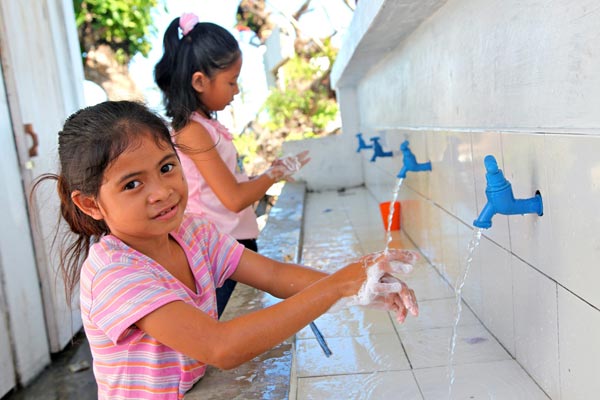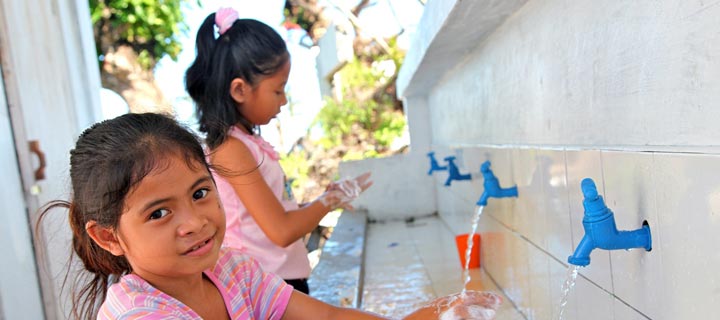Handwashing rates lowest in low-income countries
Handwashing with soap is dangerously low in many countries, UNICEF reports, despite its proven benefits to child health.
The eighth Global Handwashing Day comes less than a month after the United Nations adopted the Sustainable Development Goals, including hygiene for the first time in the global agenda. One of the SDG targets is to achieve ‘access to adequate and equitable sanitation and hygiene’ by 2030.
UNICEF says improvements in hygiene must supplement access to water and sanitation, or children will continue to fall victim to easily preventable diseases like diarrhea.
“Along with drinking water and access to toilets, hygiene – particularly handwashing with soap – is the essential third leg of the stool holding up the Goal on water and sanitation,” said Sanjay Wijesekera, global head of UNICEF’s water, sanitation and hygiene programmes. “From birth – when unwashed hands of birth attendants can transmit dangerous pathogens – right through babyhood, school and beyond, handwashing is crucial for a child’s health. It is one of the cheapest, simplest, most effective health interventions we have.”
Sub-Saharan Africa, the region with the highest child mortality rates globally, also has particularly low levels of handwashing. The latest report from UNICEF and WHO says that in 38 countries in the region with available data, levels are at best 50 per cent. Health care facilities often lack handwashing places; some 42 per cent of them in WHO’s Africa Region have no water source available within 500 metres.

Meanwhile, according to the UN’s latest estimates, over 800 of the approximately 1,400 child deaths from diarrhea each day can be attributed to inadequate water, sanitation or hygiene.
“Infants are especially vulnerable during their first 1,000 days of life, which is why handwashing with soap before breastfeeding, before preparing and eating food, and before feeding young children is so critical,” explains Lotta Sylwander, UNICEF Representative in the Philippines.
A survey conducted by the Food and Nutrition Research Institute found that only 25 percent of mothers with children aged zero to 35 months wash their hands with soap after using a latrine;and as few as 14 percent of mothers wash their hands with soap before feeding their children. These factors put Filipino children at increased risk of diarrhoea, intestinal worms, and malnutrition.
In the Philippines,the Department of Education encourages all division districts nationwide to organise school-based activities to celebrate Global Handwashing Day. City governments, schools and day care centres around the country will participate in parades, poster making competitions, poetry and song writing contests; and handwashing demonstrations.
The Department of Health, with support from UNICEF and CHSI, launched the initial rollout of a new communications campaign (Goodbye Dumi, Hello Healthy) to strengthen the use of improved sanitation and hygiene practices, in selected regions.
About Global Handwashing Day
Global Handwashing Day is celebrated on October 15. The Global Public-Private Partnership for Handwashing with Soap initiated Global Handwashing Day in 2008, and it is endorsed by governments, international institutions, civil society organisations, NGOs, private companies and individuals around the globe. Visit www.globalhandwashingday.org
About UNICEF
UNICEF promotes the rights and wellbeing of every child, in everything we do. Together with our partners, we work in 190 countries and territories to translate that commitment into practical action, focusing special effort on reaching the most vulnerable and excluded children, to the benefit of all children, everywhere.
Please visit UNICEF Philippines at http://www.unicef.ph or follow us on Facebook at /unicefphilippines and on Twitter at /unicefphils.


